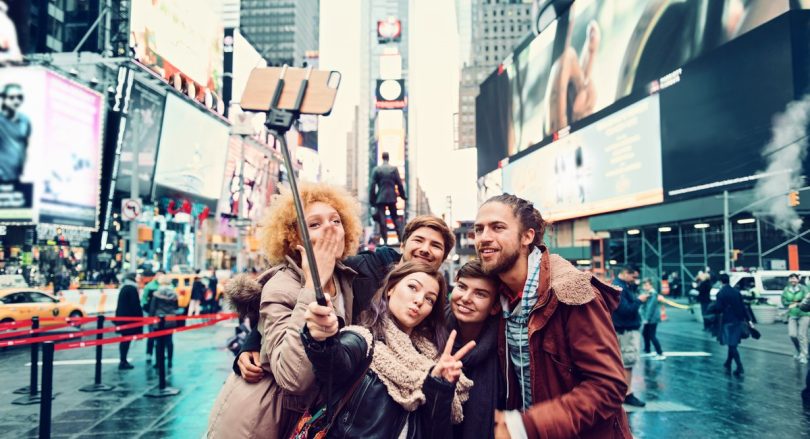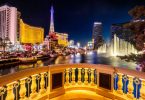To understand how President Donald Trump’s endless talk about tariffs, annexation threats and deportation newsreels bear down on New York City’s tourism businesses, look no further than Ridgewood, Queens-based Spread Love Tours.
Mike Levy’s one-man tour-guide company usually takes in about $35,000 annually from visiting Canadian high school groups. But Levy said declining tourism from Canada, which the president has mulled annexing, has “catastrophically” affected his business.
“It’s been unprecedentedly horrifying,” said Levy, who expects revenues to drop to $5,000 this year and to disappear entirely in 2026.
He won’t bear the pain alone.
Broad swaths of the city’s tourism industry are reeling from a drop in tourism spending. New York City Tourism and Conventions, the city’s primary tourism booster, recently downgraded its expectations for tourism spending, predicting a loss of $4 billion this year, driven largely by a decline in arrivals from Canada, France, Germany and Mexico.
The travel organization projects the city will attract 52 million domestic visitors this year, down from an earlier estimate of 53.1 million visitors, and 12.1 million international visitors, down from an earlier estimate of 14.1 million. The drop in foreign visitors is particularly worrisome to industry watchers because international travelers on average spend substantially more than domestic visitors.
Some experts fear the spending declines will mount with Trump’s tariffs regime still unsettled. A ramped-up federal deportation program, recently infused with some $170 billion in new funds, could compel even more foreign travelers to stay away. The World Travel and Tourism Council said the tourism drop “represents a direct blow to the U.S. economy overall, impacting communities, jobs and businesses from coast to coast.”
“This is not good,” said Claudia Green, a professor of international hospitality and tourism management at Pace University. “ The anti-U.S. sentiment and the fear of making it over the border [without hassle] is keeping a lot of people away.”
Signs of stress may run under the radar. Unemployment in the city stood at a seasonally adjusted 4.7% in June, down slightly from the month before, and 0.6% less than in June 2024. But those numbers belie other weaknesses in the city’s economy, including declining labor force participation rates, especially among men of color, according to new data reported Thursday by the New School.
More economic headwinds could be ahead. Trump on Thursday imposed a 35% tariff on Canadian goods, citing the Canadian government’s alleged failure to prevent fentanyl smuggling over the U.S.-Canada border. The White House had no immediate comment about the city’s tourism decline.
A top destination
New York City is the top destination for travelers to the United States, and the health of the city’s and country’s tourism industries are tightly linked. According to the World Travel and Tourism Council, the United States is the only country among 184 economies where international visitor spending is expected to drop this year, a $12.5 billion decline.
Richie Karaburun, a clinical associate professor of hospitality and tourism at the NYU School of Professional Studies, said multiple forces had created a “perfect storm” for the city’s tourism industry. They include the political environment, inflation, tariffs and rising temperatures, as well as a new $250 visa integrity fee required of travelers from India, Brazil and other countries, he said.
Segments of domestic tourism have also been affected, Karaburun added, pointing to mass layoffs within the federal government and cuts to higher education. He said both would result in less business travel.
“Imagine the trickle effect,” he said.
It isn’t only global politics and tariffs keeping more Canadians in Canada, which is typically the top source of international visitors to the United States. Trump’s oft-repeated threat to make Canada “the 51st state” has also left a mark.
The BBC has reported on Canadians and others recoiling over viral accounts of foreign visitors receiving rough treatment at U.S. border crossings. The alarm prompted Canada and several European countries to issue travel advisories for the United States.
But even a partially debunked viral video of a foreign visitor’s rough encounter with law enforcement in New York City can fuel ocean-spanning discussion in social media forums about staying away from the city, at least until things blow over.
All told, New York City Tourism and Conventions estimates that visitation from Canada to New York City will drop 20% this year over 2024, as well as 8% from France, 10% from Germany and 8.5% from Mexico.
‘With Love + Liberty …’
Julie Coker, the organization’s president and CEO, made no mention of tariffs or other policies in a statement accompanying the latest forecast, but cited the ongoing rollout of “With Love + Liberty, New York City,” an international marketing campaign featuring the Statue of Liberty, “a symbol of our enduring welcoming spirit and hospitality.”
“Our welcoming spirit will not waver,” Coker said in her statement, “and global travelers have an open invitation to visit the one and only New York City when they’re ready.”
Vijay Dandapani, president and CEO of the Hotel Association of New York City, said that in addition to Canadian and European tourists, visitors from Brazil and India were increasingly being affected by “a slew of bureaucratic measures instituted by the Department of State.”
He also argued the Trump administration’s travel ban for nationals of 12 countries, many of them Muslim, “sent the wrong message” for people from other Muslim countries.
Dandapani said some segments of the city’s hotel industry would feel the overall tourism decline more than others. The city’s “mid- and lower-scale market” was more directly impacted by the prevailing issues, he said, while luxury hotels were doing “relatively better.”
“The reason for that is that tourists from that sector continue to spend their disposable income as their capital accounts have done well in the financial markets,” Dandapani said, adding that city officials could help by lowering the occupancy tax.
Not all tourist attractions are struggling. The Metropolitan Museum of Art announced last month that its overall attendance had grown by 5% over the previous fiscal year, driven by strong numbers from the tristate area, which accounted for 62% of all visitors.
Similarly, attendance at the Tenement Museum was up 6%, in large part due to K-12 group tours, according to Rachael Grygorcewicz, the museum’s chief operating officer.
But Grygorcewicz said attendance from key Western countries — including Canada, the United Kingdom, Australia, France and Germany — had declined 20% over the past six months. International visitors account for 12% of the museum’s attendance, Grygorcewicz said.
‘It’s a shame’
Levy, the tour guide, said the loss of tourists from Canada meant he was less likely to contract with freelance tour guides and increasingly conduct the tours himself.
He said that includes giving private tours to wealthy tourists from Hong Kong and other places, who paid as much as $400 an hour to be chauffeured around the city in a Cadillac Escalade while taking in the landmarks along with Levy’s insights.
On the few occasions this spring that he did have Canadian student groups, Levy said he disparaged the president and apologized on behalf of the country, “ and the entire bus erupts in cheers and applause and shouting.”
Levy expressed his frustration at the state of affairs.
“It’s a shame,” he said.










